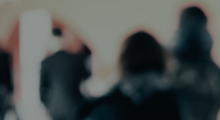2024 is all about you: your successes, your...

Interview with Dylan Taleb, KEDGE graduate and co-founder of Handddle!
Handddle enables the creation and structuring of manufacturing lines using 3D printing. Based on a concept of micro-factories, flexible and modular, this startup offers a system that can be integrated anywhere using 3D printing.
Handddle was born out of a desire to structure and standardise the use of additive manufacturing (or 3D printing). Machines and raw materials are used to launch the use of additive manufacturing, the micro-factory solution is there to industrialise and make it sustainable in the internal processes of companies. By combining software and embedded technology, Handddle lets any company to quickly integrate and deploy an entire 3D manufacturing chain in its environment, as well as the ability to regularly control it with an easy-to-use interface.
INTERVIEW - DYLAN TALEB
1. To begin, tell us about your background and your time at KEDGE.
I started KEDGE's MAI (MSc International Purchasing & Innovation Management) programme in September 2018, right after I returned from the UK where I had been working in a managerial position at Decathlon. I must confess, I was pretty apprehensive about going back to school after being in the working world. The continuing education course was something I had never really done before as part of my higher education studies. The first semester went very well and, importantly, went by very fast. Those six months allowed me to re-immerse myself in the more theoretical aspects of professional life, but I also had the chance to share and build meaningful experiences with my classmates. The second-semester internship arrived very quickly. I went to work in the offices of AXA France's headquarters in La Défense, which was a huge step from the aisles of the little British shop I had been in. I worked in the purchasing department as a junior buyer on digital, media, and customer relations projects. It was a valuable experience that I not only discovered the world of innovation in a very large company, but I also gained a "project" approach to the professional world.
For the second year of the master programme, it made sense for me to do it as a work-study between the Paris campus and my position as a buyer at Cdiscount in Bordeaux. By doing it that way, I could keep my central role as a buyer at a business-driven company. That second year, which was less theoretical and more focused on the issues and changes in the purchasing profession, was very fulfilling on the educational side of things. The relevance of the subjects covered and the quality of the instructors helped save me a lot of time, particularly since I was able to draw on their experience.
2. How did the education you received at KEDGE Business School help you become who you are today, and how did its teachings help you develop your business?
Because of the targeted courses, coupled with high-quality instructors, we acquired solid professional knowledge, not just theoretical knowledge. For example, the second year took place in the middle of the Covid crisis. Just a few weeks after the lockdown was put in place we were already discussing how such a crisis will impact purchasing jobs. I don't know how it works in other KEDGE programmes, but the MAI gave me this "global picture" vision (Cf Gordon Crichton) which, among other things, allowed me to better understand the world around me.
I started working on Handddle on the side while I was both at KEDGE and working in the job I had at the time. The Business Nursery came into the picture shortly after and was a strong partner in the development of the project, especially during the incubation phase. We benefited from an environment that was favourable to laying the groundwork with the support of the Business Nursery's partners and coaches.
Finally, and I'm saying anything new to the Kedgers reading this article, but the people I met throughout my studies and the power of the KEDGE network have given me so much.
3. Tell us about Handddle?
The project was started by one of my childhood friends, Thomas Bourgoin, an engineer who specialised in manufacturing, specifically in digital manufacturing, 3D printing. In the beginning, it started as a study project, Thomas and Pierre Marigo, also an engineer but a software engineer, wanted to create a software to structure 3D printing projects and to look at the problems encountered in the field. The idea was still in the project stage until I joined those brilliant pair of engineers, and the company was born.
At Handddle, we focus on the weaknesses of each of the different parties in the 3D printing industry: the users, the manufacturers of machines, and the manufacturers of materials. We offer a turnkey solution that lets companies deploy a 3D manufacturing chain rapidly, and that ensures that repeatable manufacturing can be achieved to meet its or its customer’s needs as closely as possible. In fact, industry in general in 2021 is facing the challenge of modernising its production tools, which is leading them to rethink the way their businesses operate in order to respond to the new issues of supply, outsourcing, and their carbon footprint. Installed in series, 3D printing is an agile and complementary response to conventional production methods. The core of our solution is a coordination software that enables the standardisation of the industrial process by creating repeatable manufacturing scenarios. Once programmed, the printers are capable of creating an identical object in series. The higher their number, the more extensive the production. Our customers have access to micro-factories that can be used to meet production needs, as well as to R&D, tooling, and spare parts manufacturing. Our "3D printing production line platform" allows manufacturers to move from delocalised production to distributed production. This is where my knowledge and purchasing insight complement those of my engineering partners.
4. What are your development goals?
After just 18 months, we have:
- Assessed the technical feasibility of the design through a pilot phase and beta testers.
- Established partnerships within the 3D printing ecosystem.
- Built our reputation.
- Constructed a first commercial pipeline.
Currently, we have a small team of around ten employees and we are focusing on three main objectives for the end of the year 2021:
- Ensuring the supply of all our customers in this period of crisis.
- Making the second version of our "Smart Farm" hardware solution more reliable with a pre-industrialised version.
- Developing our software functionality with the introduction of features that will let us go even further in the definition and use of these technologies.
2022 will be mainly focused on the industrialisation and marketing of our product in order to take full advantage of this time-to-market opportunity.
5. Finally, If you were to give advice to any KEDGE graduate who wants to do something similar, what would it be?
Be where the action is - which is on the ground - as fast as possible. Work hard in whatever role or environment you're in, roll with the punches, and above all, make the tough choices. While I don't particularly like it, remember this: Donald Trump once said " Nothing worth doing ever, ever, ever came easy ". In my experience, this has been proven to be true many times over.
FIND OUT MORE LINKEDIN - DYLAN TALEB
Follow Handddle on social networks:
- Facebook: https://www.facebook.com/handddle.am/
- Instagram: https://www.instagram.com/handddle.am/
- LinkedIn: https://www.linkedin.com/company/handddle/
- Twitter: https://twitter.com/handddle/







0 Comment
You must be logged in to leave a comment.
No comment